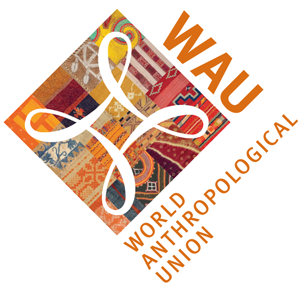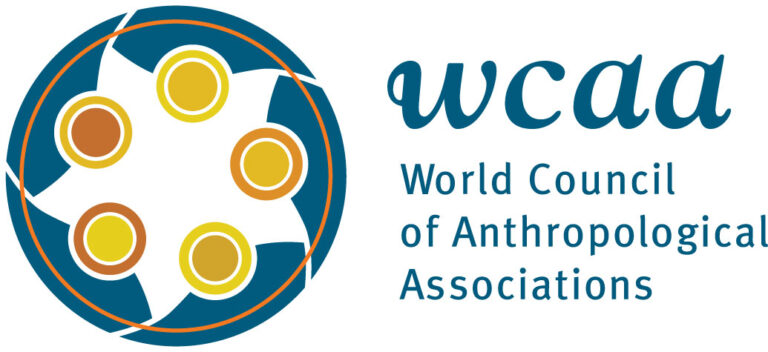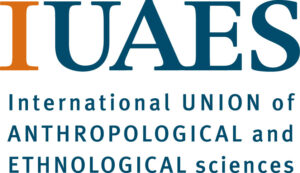Questions for Journal Editors for the Tenth Anniversary of Deja Lu
Elizabeth Chin, editor of American Anthropologist, interviewed by Leilah Vevaina
June 23 2021
Leilah Vevaina: Tell us a little bit about the journal you edit and your role within that, when you began as editor.
Elizabeth CHIN: I edit American Anthropologist, and oh my goodness it’s been printed for a very long time. It’s the flagship Journal of the American Anthropological Association. And let’s see, I took over in July, 2020.
I think it’s an exciting moment, for a lot of reasons. The previous editor really did such a lot of work to move the journal into, I think, really important territories, particularly having to do with race and questions of inequality within the discipline. And, I think, more global relevance to anthropologists as well as recognizing that we need to invite and engage more with anthropologists who are not from the US or trained in the US, so she did a lot of that and I’m certainly trying to keep those directions going.
But one thing that I’m doing that’s really quite different from how editors have tended to work in American Anthropologist is that I work very collaboratively with my associate editors. They’re a very important part of how it all works. So we’re really a team in all kinds of important ways; we meet every week. They’re playing a much more central role in running the journal helping to make decisions, which is, I think, very helpful to me personally, but it’s also about wanting to have a more collaborative ethic. And it’s also quite frankly about wanting to have a larger group of people who have that experience, so that they can go to other journals or, you know, run this journal later. A lot of my goal has really been to be as open as possible, as transparent as possible, to really practice and expect values of care and reciprocity. And I learned a lot of that from the associate editors who have that as an area of expertise, [while] I’m a little more instinctual.
Vevaina: Do your associate editors have thematic expertise?
CHIN: I mean, yes. But, you know, they’re kind of assigned by subfield. It was, you know, the value set [that] was something that was really important to me, so it either had to be something they brought to the table or that they invested in. And again I think we all learn a lot from each other, as we develop big and little things in terms of how we relate to each other. We’re doing a lot of work in doing more developmental reviewing. So it’s much less of dropping the guillotine. We want the review process to be as productive as possible. Certainly you know some stuff gets submitted and it’s just totally not right and you say “thank you very much. This belongs somewhere else”; you don’t need to give them a long bunch of feedback. But, I try and the editors try, to be honest; I think the large majority of reviewers try to be really helpful. They try to support the work. Some of that’s just in how we couch the reviews and frame them. I take a lot of time to really try to create a roadmap for authors, and to really be clear and honest. “Here are the key things and here’s the kind of mindset sense of what is really coming out of what these reviewers are saying, and a successful revision needs to address these points,” and I try to make it even, like, visually clear, so there are bullet points, you know, and it’s easier to parse. In the reviews we do that with some material, particularly multimodal material. We actually are doing a more “crit” [critique by jury] based process, which comes out of Fine Arts, and is really more appropriate to those mediums like film, photos, or even creative writing, where we will get either a group of editors, or sometimes outside people to do a credit, which is you know in the arts where you sit down and you talk about the work. And out of that conversation comes, “this is what it needs this is what it would take.”
Vevaina: Oh that sounds really interesting. Is the author or creator part of that?
CHIN: That’s a group discussion. Yeah. Crits can be done in a really destructive way and quite often are, but we try not to do that, particularly with multimodal stuff where we are clear that the production standards and publication standards are at a high level. So, if you don’t know anything about film and don’t think about film, it’s unlikely that your film is going to be acceptable; we’re going to have lots of things to say about it. We want to understand your choices, in whatever medium.
And in my own practice, right, if I’m going to put something out into the world in a professional venue, then it needs to be at a professional level. I don’t want to publish things in the journal or on the website that don’t meet a high standard of excellence. We’re totally happy and willing to help people get there. They just need to meet us with that desire and attention, and of course many people are very accomplished and they bring that, so it’s exciting. There’s some really great stuff, like one of the things that we have coming is this wonderful piece about unaccompanied minors traveling from Central America. It’s a visual piece, the illustrator is the author’s daughter, who’s 15 and who was in the field with her when she was young, the illustrations are beautiful. They’re done by a 15-year-old girl who doesn’t have a Fine Arts degrees, but they’re beautiful.
There’s this visual piece that’s done on Adobe Spark, which is free software that anybody can use. It’s not complicated, but is very different than just like sticking up some pictures. So it’s this story and then the text comes, written in English, written in Spanish and written in the indigenous language: it’s this whole suite of parts, which is something that we can do now in the digital world ,so to me that kind of highlights what a multimodal project can be
Vevaina: Can you talk a little bit more about the initiatives that you’ve taken?
You didn’t say this word, but “diversify” is key: at what levels are you taking those initiatives?
CHIN: So, certainly with associate editors, women, people of color, disability, but also ways of working with the editorial board plus associate editors. I was really influenced by the article that was published whose lead author is Nick Kawa. It was a social network analysis of who gets jobs in anthropology. I have my spreadsheet, a list of where everybody got their degree and where they work now, and I was like, those top five departments are not going to be overrepresented here and in fact if anything I want them to be underrepresented.
In some ways, I actually am very, very proud of the fact that of the people who got their degrees from those departments, Berkeley, Michigan, Chicago, the ones who were on the board or the associate editors are people of color. And in putting together the overall board, I was very purposeful in having Community Colleges and HBCU [Historically Black Colleges and Universities] represented. What I ideally would like are lots of people from from institutions outside the United States. So, we are also trying to reach out to sections of AAA as a way of saying, “I care what you think; this journal cares what you think. We want you to feel like this is a place for you to register your work, where you’re relevant.” Same with the public and practicing anthropologists; the very first person I called to be on the board is somebody who works at Google. I have someone else who’s from the VA [Veteran’s Administration]: there’s over 150 anthropologists who work at the VA. If you want to publish a short piece, if you don’t have time to do a full research article but instead a smaller commentary piece of 1500 words, we’ll take a look at it, we will take it seriously. You know, there’s ways to be part of the conversation. The website is another place to be part of the conversation. “Oh yes, come on in,” we want to send that message!
Vevaina: Does American Anthropologist publish in languages other than English?
Chin: Abstracts yes, and this visual piece has the text part done in three different languages; but generally we don’t. I would love it; I would love to just be like, “Yeah this article’s in Chinese, If you don’t read Chinese that’s your problem.” We can’t do everything, but we can [suggest for those whose native language is not English] some great editors that you could work with to help you with your work in English who don’t charge the earth.
Vevaina: So Deja Lu’s mandate is to really bring more attention to the journals that represent associations outside of the US. But you have another mandate because you’re the flagship Journal of the American Anthropological Association: you have to toggle between these two.
CHIN: Right. it’s an odd thing. One of the things that I see a lot of, both within the American Anthropological Association and outside of it, is that people feel marginalized. They don’t want to participate. The work of either changing perceptions, or creating relationships or repairing relationships or changing narratives is really important in terms of who’s going to submit, or whose stuff is going to be in American Anthropologist. One of the great things about the
lockdown was that it made so many conferences go virtual, which has meant that I’ve been able to pop into a lot of stuff which I wouldn’t have been able to do before because it would have meant flying around the world, and I don’t have a big enough budget for that; I have a little budget from AAA so that I can go to some conferences, but not many. But I was able to look in on a theory and archaeology conference that just happened at Stanford, and there were these amazing archaeologists from Brazil. And, you know, I want to find out more about what they’re doing and encourage them to submit something, or just have a discussion and see what happens. So that has been great. You don’t have to fly everywhere to take advantage of this.
Vevaina: Especially because I’m based in Hong Kong. I was trained in the US but I have now spent most of my academic career outside of it and it is interesting to see it from the outside in a different way. Whereas I think when you’re in the US, it can feel like this is everything. This is a question we talked about at Deja Lu a bit: Do we want to publish in other languages, and then is English actually the medium that enables that kind of international audience?
CHIN: We publish in English, and, you know, it’s complicated and tough but in the case of American Anthropologist we’ve always published in English. I think it’s likely we’ll be moving to a print-on-demand situation, because our last issue we printed 400 copies. The contract is coming up with Wiley. We’ve been meeting with every publisher, you know, which is super interesting because publishing is changing really fast. You know, the journal funding model is 350 years old and it hasn’t changed!
Vevaina: That’s amazing.
CHIN: The vast majority of people, they’re looking at stuff when it comes at an early view. They’re not looking at issues. And the issue is a form from the analog world. Right. That’s still in the digital world, but maybe it doesn’t need to be; maybe it can be something different. One of the things I’m bringing to the table is that we design our covers. My students are designers, I work at a design school, and the covers are looking pretty cute, which is again something that I can uniquely draw on from my students and I want to showcase that. So we’re very excited about the upcoming covers. But I think also we have to think really seriously about both what are the opportunities with digital, among them open access. Digital does allow other things that are unique, and I’m hoping that we can experiment with that.
Vevaina: I think we’ve covered a lot that I wanted. Do you want to add anything here?
CHIN: The whole idea is to put different articles in conversation with each other, visually, so using, visual stuff that’s from inside the issue. That’s so they’re not didactic in the sense that they’re not an illustration. So I think of them as a little bit like a puzzle.



